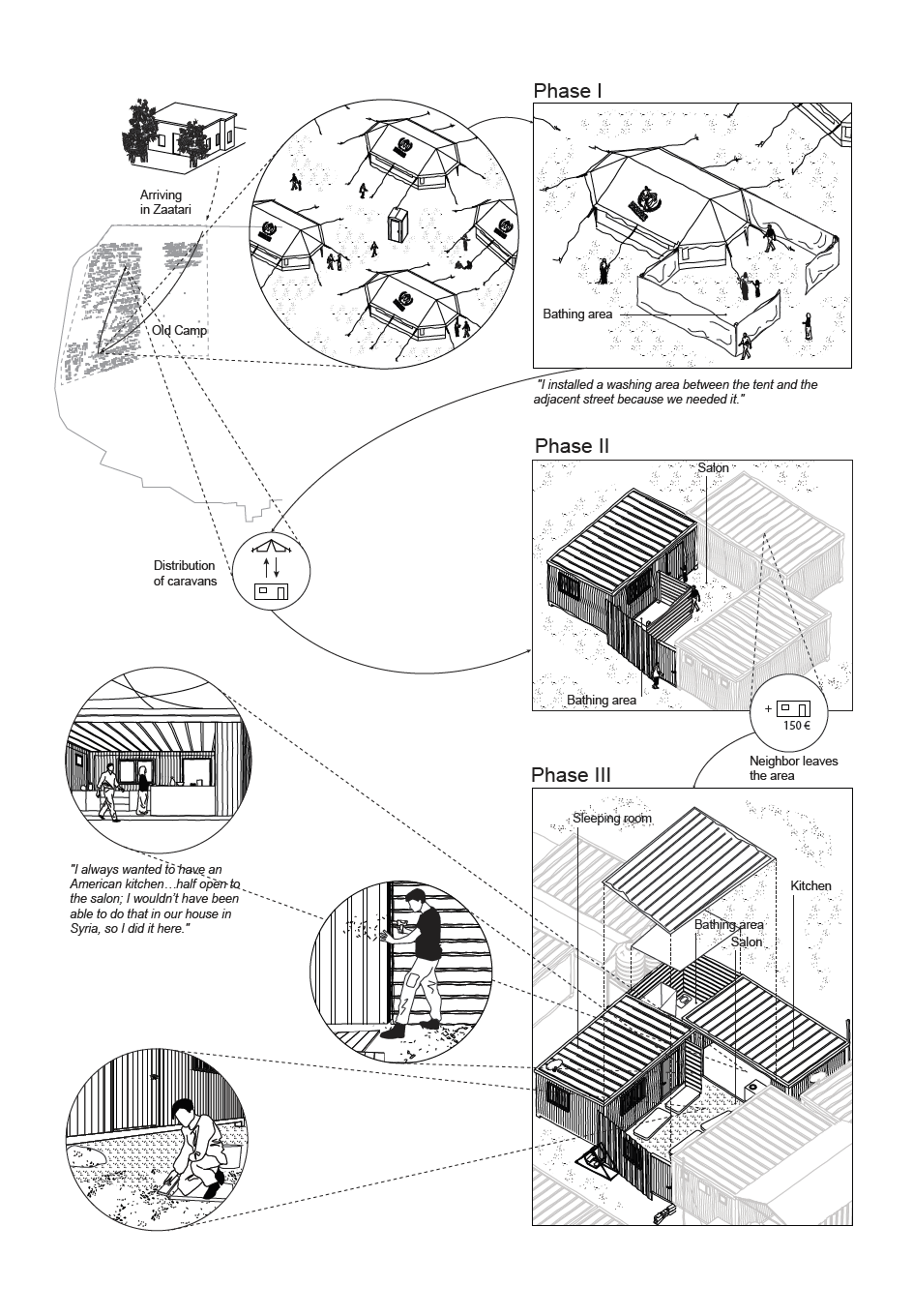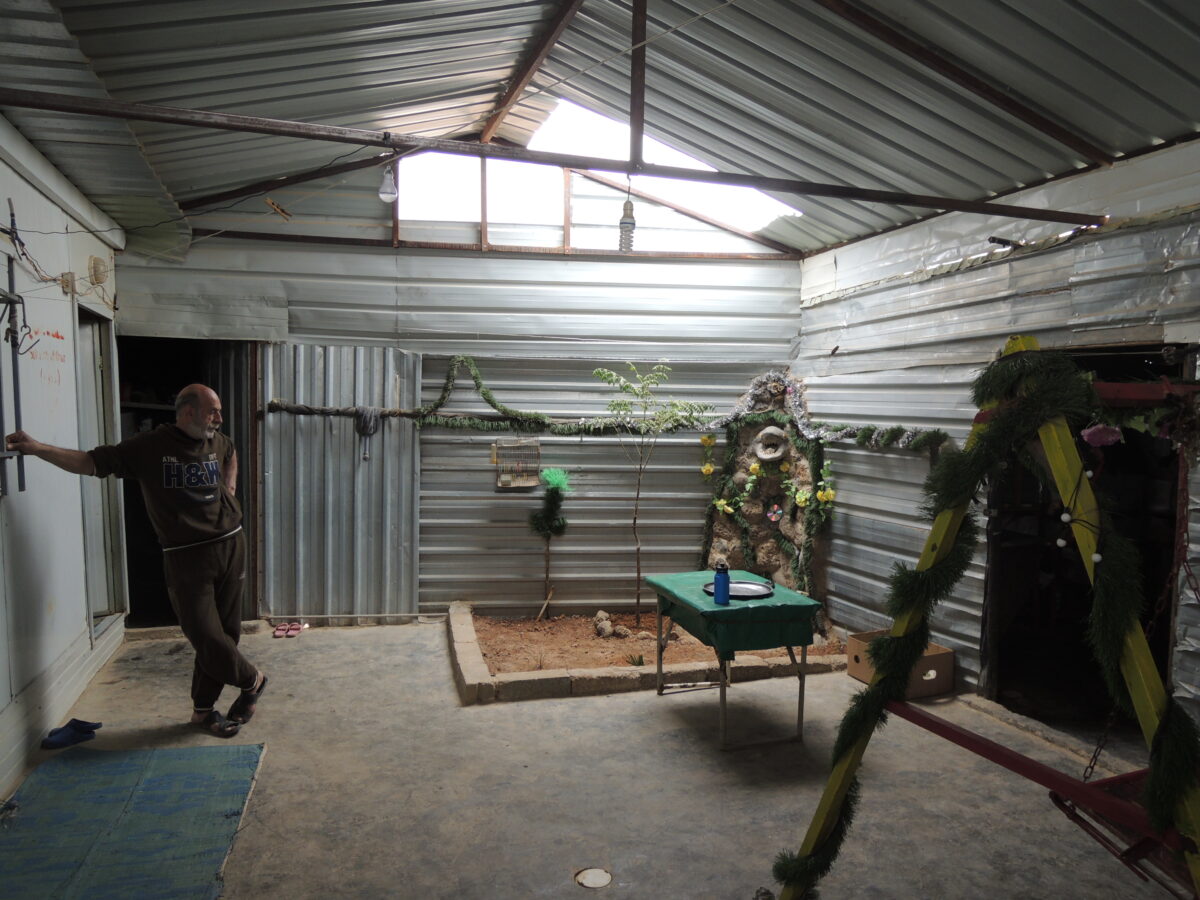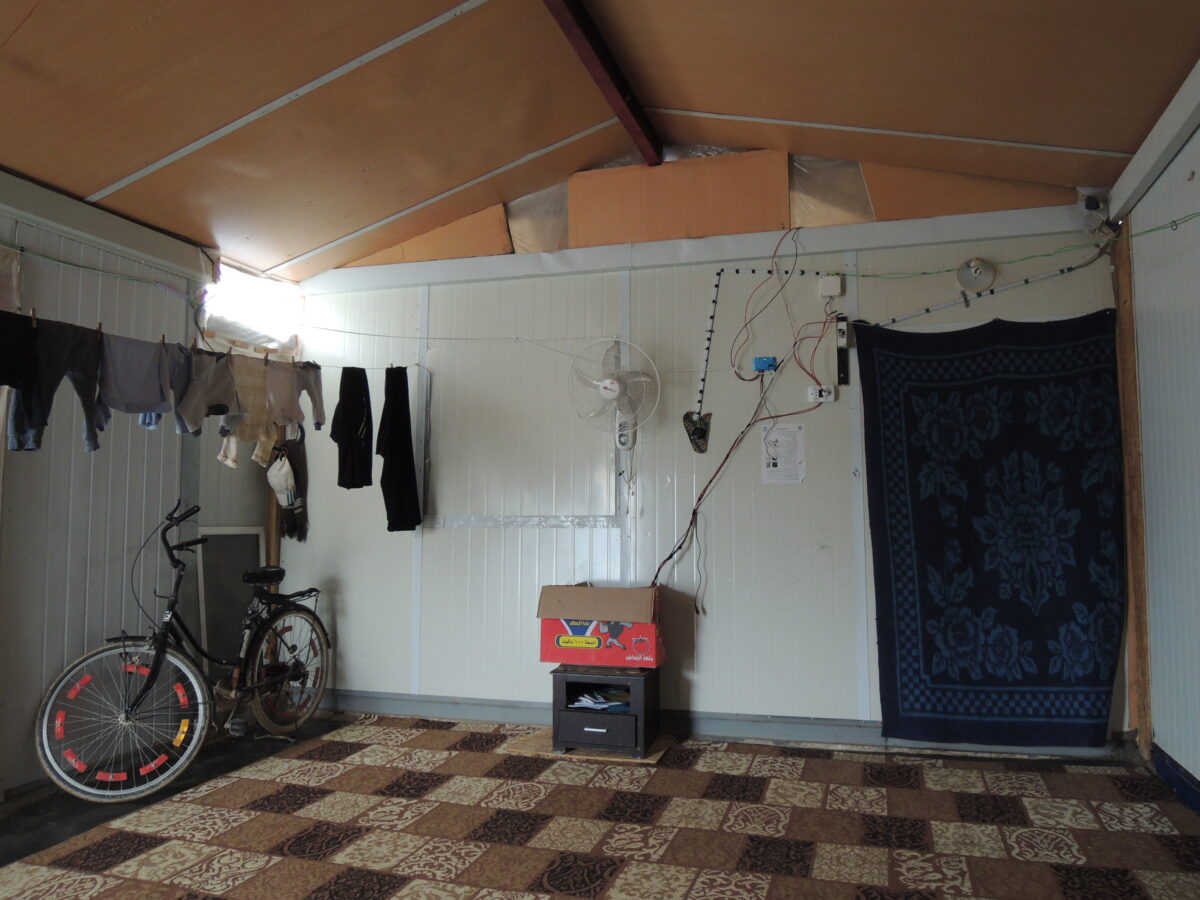From Shelters to Dwellings
Refugee camps are temporal spaces built to offer accommodation and protection for displaced populations fleeing war and destruction in the form of shelter. However, with the prolongation of exile, shelters become slowly appropriated. Their one-room space is divided and extended into multiple rooms, and their initial empty space is transformed into a gradient of social space embedded with codes, meaning and function. Their architecture also gradually change and become consolidated into spaces on inhabitation: porches and cantilevers are added to demarcate the entrance; kitchens and bathing areas are built next to the living space; fenced gardens are added to the backyard where herbs and trees are planted; shelters are connected with tilted roofs to protect from rainwater and harsh weathers; guests’ rooms are furnished with decorative carpets to receive guests and small thresholds are built near the entrances for the neighbors to meet and sit in the shade. The initial space of the shelter transforms into various forms of dwellings that reflect social relations, culture and identity.
This research sheds light on this particular transformation that has been for long neglected by researchers and practitioners. How do refugees transform shelters into dwellings? What factors and processes play a role in this transformation? And what could be learned from that on the level of shelter, dwelling and the camp? To answer these questions the research looks at Zaatari camp in Jordan as a case study. By exploring this process on the level of the camp, the dwelling and the shelter, the research suggests that dwelling in camps is a process of dismantling the camp and its humanitarian order and reassembling it again according to a social order. By that, the transformation aims to spatialize social relations, to construct a gradient of social spaces, and to delineate, negotiate and consolidate familial boundaries as they emerge. To do so, refugees utilize multiple forms of spatial knowledge ranging from the inherited in the previous context of the dwelling to the learnt and the emergent from the next context of living. This transformation is also incremental and operated through tactics that seek opportunities and cracks within the system of the camp to expand. It is also highly dependent on negotiating these multiple factors over time. In Zaatari camp, refugees had to also negotiate the political, economical, and architectural dimensions of shelters and material.
By suggesting that dwelling is a process of dismantling and reassembling the camp, this research does not only contribute to the emerging body of knowledge on refugee camps, but also shed light on the importance of dwelling at times of displacement. It concretely suggests that the production of dignified spaces for refugees in camps and within emergency shelters cannot ignore the social dimensions of space anymore, and needs to take into consideration that the human need for dwelling is primary, and beyond all other political, temporal and technical limitations and considerations.
-
TypePhD Project
-
Funding 1DAAD (Leadership for Syria)
-
Funding 2DFG (German Research Society) via SFB1265
-
Year2015 - 2019
-
JordanJordan

-
 From shelters to dwellings in Zaatari camp (Credits: Veronika Zaripova and Ayham Dalal)
From shelters to dwellings in Zaatari camp (Credits: Veronika Zaripova and Ayham Dalal) -
 A view inside an appropriated dwelling in Zaatari camp.
A view inside an appropriated dwelling in Zaatari camp. -
 A view inside a newly built dwelling out of container units (shelters).
A view inside a newly built dwelling out of container units (shelters).